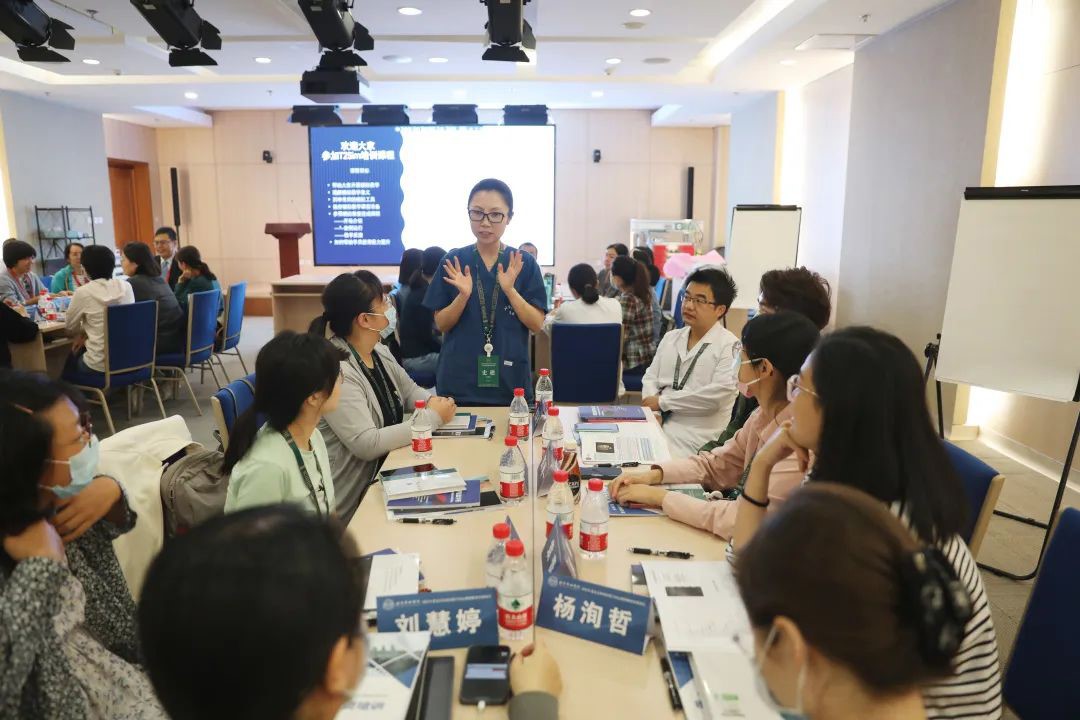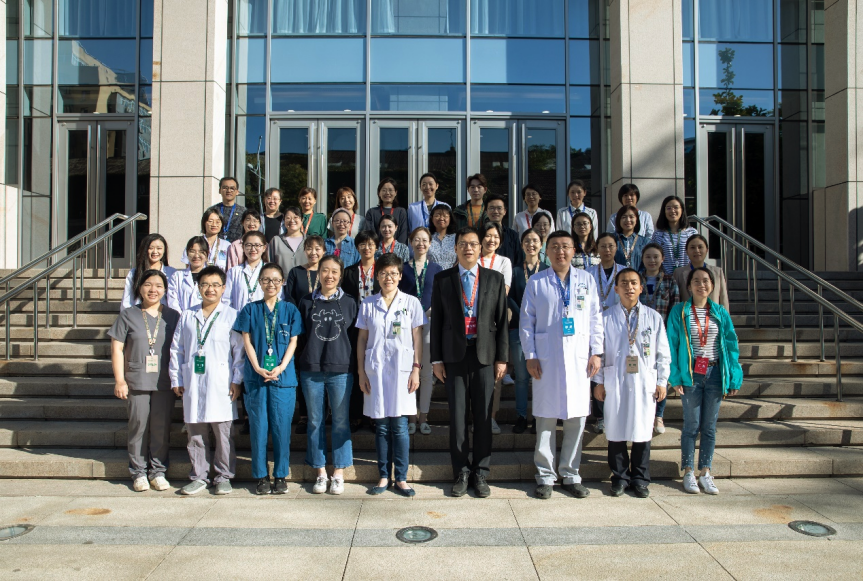The first session of Training to Simulation Instructors (T2Sim), PUMCH’s new training program for simulation instructors, was held recently. The program is led by the Department of Education and designed by eight senior simulation instructors together. Based on the senior instructor training model needed to cultivate excellent medical talents in the context of “new medicine”, the program explores and seeks to build a bigger team of simulation instructors. Altogether 32 trainees were recruited for the first session.
Simulation-based medical education is the methodology that uses various kinds of simulation aides to create clinical scenarios that simulate real ones for clinical teaching. Scenario simulation is the key. As far as Liu Jihai, a core instructor of the program, is concerned, “scenario simulation-based teaching is more like setting up a stage for students, giving them a part to play in the scenarios and guiding them to develop clinical thinking and decision-making abilities and acquire the knowledge and skills needed. Instructors no longer simply impart knowledge like they used to do. Instead, they let students take center stage and guide them to address clinical issues in the simulated scenarios.”
Case Demonstration
Instructors showing the whole process of simulation-based teaching
The simulation case kicked off with the patient’s anxious cry for help: “Ouches, doctor, I can’t breathe... please help me now!” A 46-year-old man with sudden respiratory distress was taken to the emergency room by the ambulance, and the simulation proceeded in order. With this, the 8 instructors on site showed trainees how to steer a simulation case for students, who could thus experience the whole process of how to receive a patient with respiratory distress and give him emergency care. After the case was over, instructor Liu Jihai and assistant instructor Wang Lin guided the other 6 trainees to review it and give feedback. The trainees shared their personal experience of the simulation case from different perspectives and had intense discussions and reflections on the clinical decision-making process and teamwork in emergency treatment in particular.
After the demonstration, the eight instructors guided the 32 trainees to meticulously go over the four key steps, namely “preparation before class, introduction, case simulation, and feedback”, summarizing the teaching skills needed to be a simulation teacher, and helping the trainees to fully understand and efficiently master the methods and skills of running case simulation. All the trainees agreed that this teaching format was more animating, engaging and effective. Everybody itched to try it themselves in the practice session.
Practice
Trainees’ first try
After the theoretical part, the trainees were divided into two groups and ran the simulation of “assessment and management of patients with acute urinary retention” and “placement of gastric tube in patients with head trauma” respectively. In their own role such as teacher, teaching assistant, student, patient or observer, the trainees put what they learned into practice throughout the process of scenario simulation-based teaching. Both groups completed the simulation and teaching within the specified time limit. Through the hands-on practice, trainees significantly improved their ability in running simulation cases, reviewing, and giving students feedback, and better appreciated the importance of each different role in a scenario simulation class.
Long-term Commitment
Creating a first-class faculty team
PUMCH’s top-notch faculty was not built in a day, but shaped gradually over a long time by the generation after generation of PUMCHers who were genuinely passionate about and committed to teaching. A hospital-wide internal survey shows that PUMCHers have a strong demand for training to simulation instructors. In light of this, the hospital, after months of preparations and finetuning, launched the T2Sim program, another “T series” program for advanced training to teachers.
Chinese medical education in the context of “new medicine” calls for continuous model innovation. Simulation-based teaching is a model that plays an important role in the cultivation of medical students and young doctors as it teaches clinical skills and more importantly emphasizes “soft” attributes such as clinical thinking, clinical decision-making, doctor-patient communication and teamwork, all geared towards the ultimate goal of improving medical service quality and ensuring patients’ safety and health.
Vice President Du Bin said to the instructors and trainees: “Education is a long-term endeavor, and sustained investment in medical education will lay a solid foundation for the high-quality development of the hospital in the new century.” He hoped that the trainees would apply the “student-centered” teaching concept and the skills of running scenario simulations they acquired through the T2Sim program to their future teaching, so as to benefit more students, nurture a favorable teaching atmosphere, build a larger and better faculty team, and achieve greater accomplishments in the “new medicine” context.

Group discussions in the training

Group picture of instructors and trainees of the T2Sim program
Written by: He Zitang and Li Yue from the Department of Education
Picture courtesy: Sun Liang
Translator: Liu Haiyan
Editor: Wang Yao
